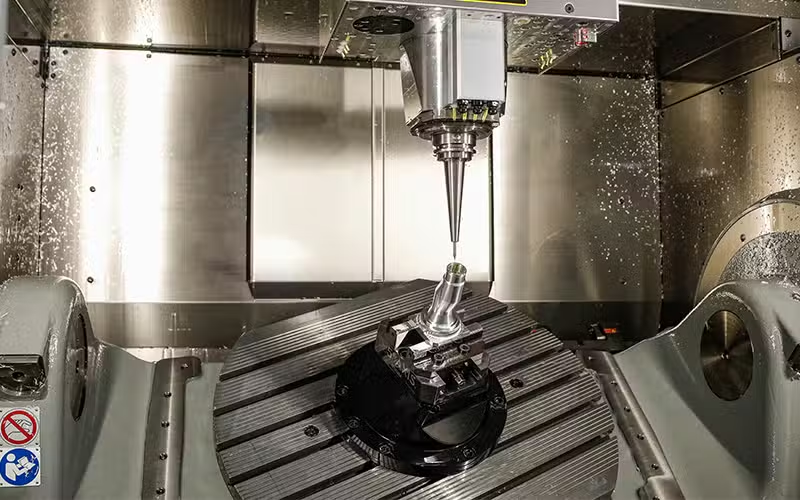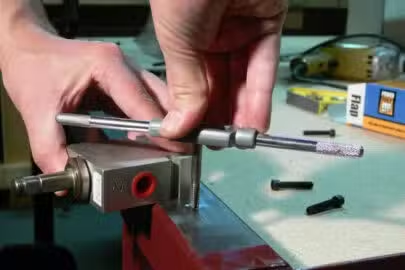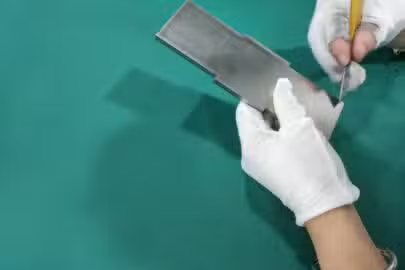CNC milling, known as Computer Numerical Control milling, is a transformative manufacturing process governed by computer software to direct machinery movement. This process involves the use of CNC milling components and precision machining tools to shape solid materials into intricate forms by removing excess material.
Unlike additive processes such as 3D printing, CNC milling, a form of Precision CNC milling, is subtractive. It relies on CNC milling tools and techniques to achieve its results, ensuring tight tolerances and fine details in the produced parts.
This article serves as a CNC milling guide, walking you through how it works. Understanding the CNC machine parts and CNC milling tools involved in the process will help you grasp its complexity. Additionally, you will learn the safety measures of CNC milling and its advanced process.

Definition and Importance of CNC Milling
CNC milling is a computerized process used by manufacturers to produce custom-designed components with high precision and quality finishing. This process involves the use of CNC milling components and precision machining tools.
In CNC milling, a mounted cutting tool rotates around the stationary workpiece to create various features. The tool moves along different axes, such as the 3-axis, 4-axis, or 5-axis CNC milling machines, to machine highly intricate designs. This method of Precision CNC milling is distinct from other manufacturing processes like 3D printing, as it removes material from the substrate to precisely form a part according to the product specifications.
By utilizing CNC milling technology and software, manufacturers can optimize the CNC milling process. This includes selecting the appropriate CNC milling materials and equipment for the task at hand. Additionally, CNC milling operations can benefit from CNC milling services, which provide specialized expertise and equipment.
The Anatomy of a CNC Milling Machine
CNC milling machines are incredible examples of precise engineering. They are made up of different parts, known as CNC milling components, that work together to create detailed and accurate parts. Here are the main components that make up a CNC milling machine:
Frame and Base:
The frame and base are like the strong bones of the CNC milling machine. They provide a solid foundation to support the machine during the cutting process. Usually made from rigid materials like cast iron or steel, they keep the machine stable and sturdy.
Spindle and Axes:
The spindle is the heart of the CNC milling machine. It holds the cutting tool and spins it at high speeds to remove material from the workpiece. Depending on what’s being machined, the spindle can change its speed and power. This is where Precision CNC milling comes into play, ensuring the utmost accuracy in the final parts.

Here are the axes of the machine, which decide how the cutting tool moves:
- Vertical Axis (Z-Axis): This axis controls the up-and-down movement of the cutting tool. It helps adjust the depth when cutting into the material.
- Horizontal Axis (X-Axis): The X-axis moves the cutting tool side-to-side along the length of the material.
- Depth Axis (Y-Axis): The Y-axis moves the cutting tool back and forth across the width of the material.
These axes work together to precisely position the cutting tool, letting the machine create all sorts of intricate shapes and designs.
Control Panel:
The control panel is like the brain of the CNC milling machine. It’s where operators input commands and control how the machine works. With a screen, keyboard, and various buttons, operators can set things like speed and how fast the cutting tool moves. They can also watch the whole process in real-time.
Toolholders and Cutting Tools:
Tool Holders are what keep the cutting tools in place inside the spindle. They come in different designs to fit all kinds of cutting tools, from drills to end mills. While cutting tools shape and removing material from the workpiece, the final part is created. They come in all shapes, sizes, and materials to handle different tasks.
Material Consideration for CNC Parts
Selecting the suitable materials for parts is crucial, impacting the performance, durability, and even the machining process itself. Here are the key considerations when choosing materials for CNC machine parts, focusing on metals used in CNC milling and non-metal materials:
Metals Used in CNC Milling:
Aluminum:
Properties of aluminum include lightweight, excellent corrosion resistance, and ease of machine use. It is ideal in aerospace, automotive, and electronics industries for its versatility and good strength-to-weight ratio. It offers good machinability, making it suitable for parts requiring complex designs or complex shapes.
Stainless Steel:
Properties of stainless steel include High strength, excellent corrosion resistance, and durability. This is commonly used in industries such as automotive, aerospace, and medical for parts requiring robustness and a polished finish. It provides good machinability when compared to some other high-strength alloys, allowing for precise machining of intricate details.
Titanium:
Properties of titanium include Exceptional strength-to-weight ratio, corrosion resistance, and high-temperature tolerance. It is ideal in aerospace, medical implants, and marine applications for its lightweight yet durable properties. It offers excellent machinability with the right tools, allowing for the creation of high-performance parts with complex designs.
Brass and Copper Alloys:
Properties of brass and copper alloys include Excellent electrical conductivity, corrosion resistance, and aesthetic appeal. It is ideal for electrical components, plumbing fixtures, and decorative parts. It provides good machinability with precise detail retention, making it suitable for parts requiring fine finishes.
Steel (Carbon and Alloy):
The properties of steel vary based on the alloy, offering a wide range of strength, hardness, and toughness. It is used in various industries such as automotive, construction, and tooling for its versatility and durability. Depending on the alloy, steel can offer good machinability with proper tooling, allowing for the production of robust and wear-resistant parts.
Non-Metal Materials for CNC Parts:
Plastics (e.g., ABS, Acrylic, Nylon):
Properties include lightweight, versatility, and cost-effectiveness. It is Ideal for prototypes, consumer goods, and electrical components due to their ease of machining and range of properties. It offers good machinability with minimal tool wear, allowing for the creation of precise parts with intricate features.
Wood:
Properties of wood include Natural, renewable material with varying degrees of hardness and grain patterns. It is ideal for furniture making, decorative items, and prototypes. Wood is easy to machine and provides a unique aesthetic appeal, making it suitable for custom designs and artistic creations.
Precision Machining Techniques
CNC milling, a crucial part of modern manufacturing, depends on precise machining methods to create accurate and detailed parts. Let’s explore two important aspects of precision machining in CNC milling: CAD/CAM software integration and programming for precision.
CAD/CAM Software Integration:
CAD/CAM (Computer-Aided Design/Computer-Aided Manufacturing) software integration is essential in CNC milling, ensuring a smooth transition from design to machining. Here’s how this integration boosts precision in CNC milling:
Design Accuracy:
Engineers use CAD software to craft detailed 3D models of parts, capturing every aspect and feature. CAM software then translates these models into precise machining instructions, creating toolpaths that guide tool movements. The integration of CAD and CAM guarantees that the final machined part matches the design with exceptional accuracy.
Automation and Consistency:
The CAD/CAM integration automates many machining tasks, minimizing human errors. Once the program is set, it can be replicated for batch production, ensuring consistent precision across multiple parts. This automation not only enhances precision but also improves productivity and efficiency.
Programming for Precision:
Programming for precision in CNC milling involves creating exact toolpaths and machining strategies for accurate results. Here are the main aspects of programming for precision:
High-Resolution Toolpath Generation:
Programmers develop toolpaths with high precision, specifying the exact movements of the cutting tool. This precision ensures that the tool follows the intended path with minimal deviation, resulting in accurate part dimensions.
Tool Selection and Management:
Selecting the appropriate cutting tools is crucial for precision machining. Programmers consider factors such as tool shape, material compatibility, and durability when choosing tools. They also monitor tool life and implement tool change routines to maintain precision throughout the machining process.
Real-Time Monitoring and Adjustments:
During machining, programmers may use CNC features for live monitoring. This includes detecting tool wear, monitoring spindle load, and taking in-process measurements. Immediate adjustments can be made to uphold precision and quality throughout the machining operation.
Advanced CNC Milling Process
CNC milling, a sophisticated manufacturing technique, continues to evolve with advancements in technology. Advanced CNC milling processes such as multi-axis machining, high-speed machining, and micro-milling have revolutionized precision and efficiency in producing intricate parts. Here are the advanced techniques:
Multi-Axis Machining:
Multi-axis machining expands the capabilities of CNC milling machines by enabling tools to move along multiple axes simultaneously. This technique allows for intricate and complex geometries to be machined with remarkable precision. Here’s an overview of multi-axis machining:
3-Axis Milling:
Traditional CNC milling machines operate with three axes: X, Y, and Z. These axes control the tool’s movement in three directions. 3-axis milling is versatile and commonly used for producing parts with simple to moderately complex geometries.
4-Axis Milling:
In 4-axis machining, an additional rotary axis (typically the A-axis) is added to the setup. This rotary axis enables the cutting tool to tilt or rotate, allowing for the machining of features from various angles. 4-axis milling is ideal for parts that require angled holes, contours, or undercuts.
5-Axis Milling:
5-axis machining introduces two additional rotary axes (typically the A and B axes) to the milling machine. With simultaneous movement along five axes, the cutting tool can approach the workpiece from any angle. This capability allows for the machining of highly complex shapes, contours, and sculpted surfaces. 5-axis milling is crucial for industries such as aerospace, automotive, and medical, where intricate parts with tight tolerances are common.
High-Speed Machining:
High-speed machining (HSM) is a cutting-edge CNC milling technique that involves using significantly higher spindle speeds and feed rates. This method enables faster material removal rates while maintaining precision and surface finish. Here are the key features of high-speed machining:
Increased Spindle Speeds:
High-speed machining employs spindle speeds much higher than traditional machining. This rapid rotation of the cutting tool allows for faster cutting rates and reduced cycle times.
Improved Surface Finish:
The high speeds and precise tool movements in HSM result in smoother surface finishes. This is particularly advantageous for parts requiring fine finishes or those that will undergo subsequent finishing processes.
Enhanced Tool Life:
Contrary to the belief that high speeds may reduce tool life, High-speed machining often improves tool life. The optimized cutting parameters and reduced heat generation contribute to longer tool life and reduced tooling costs.
Micro-Milling:
Micro-milling is a specialized CNC milling process used to create minimal features or parts with high precision. It involves using miniature cutting tools with diameters as small as a few micrometers. Here’s what you need to know about micro-milling:
Tiny Cutting Tools:
Micro-milling employs miniature cutting tools with diameters ranging from a few micrometers to a few millimeters. These tiny tools enable the machining of intricate features, fine details, and small parts.
High Precision and Accuracy:
Micro-milling machines can achieve exceptional precision, with tolerances as tight as a few micrometers. This level of precision is crucial for industries such as electronics, optics, and medical devices that require minimal and accurate components.

Sub-Micron Surface Finishes:
The small cutting tools and precise movements in micro-milling result in sub-micron surface finishes. This ultra-smooth finish is ideal for parts requiring optical clarity, low friction, or minimal wear.
Here is a table showing the Maintenance and Safety Measures of CNC Milling Machines:
| Maintenance Task | Description |
| Routine Maintenance | Regularly inspect and clean machine components such as spindles, toolholders, and coolant systems. |
| Lubrication | Ensure proper lubrication of moving parts to prevent wear and maintain smooth operation. |
| Tool Inspection | Check tools for wear, damage, or breakage and replace them as needed to maintain cutting precision. |
| Calibration | Perform regular calibration of machine axes and tool offsets to ensure accurate machining results. |
| Chip Removal | Clear away chips and debris from the work area to prevent interference with machining operations. |
| Safety Checklist | Follow safety protocols such as wearing appropriate PPE, securing workpieces, and emergency procedures. |
| Electrical System Check | Ensure proper grounding and inspect electrical components for signs of wear or overheating. |
Economic Impact of CNC Milling
CNC milling technology has revolutionized modern manufacturing, offering significant economic advantages in terms of cost-efficiency, production scalability, and customisation capabilities. Here are the economic impacts of CNC milling, focusing on its benefits in cost-efficiency, customisation, and scalability:
Cost-Efficiency in Production:
Cost efficiency in production is a hallmark of CNC milling, where automated processes reduce labor costs significantly. Operators can program machines to run autonomously, minimizing the need for constant supervision. This automation not only decreases labor expenses per part but also makes CNC milling a viable option for mass production.
Customisation and Scalability:
CNC milling offers unparalleled flexibility in creating custom-designed parts and prototypes, driving innovation, and meeting diverse customer demands. Engineers can easily modify CAD designs to suit specific requirements or design iterations. This ability to customise designs on demand enables manufacturers to cater to niche markets and offer tailored solutions.
Scalability is a crucial advantage of CNC milling, allowing businesses to adjust production volume as needed without extensive retooling. Manufacturers can quickly scale up or down production to meet market demands, respond to seasonal fluctuations, or accommodate sudden shifts in customer preferences. This flexibility ensures efficient resource utilization and adaptability in dynamic market conditions.
Conclusion
CNC milling is a powerful manufacturing method that combines the precision of computer control with the versatility of milling. It is capable of producing complex parts with high accuracy and repeatability, making it a valuable tool in a wide range of industries. Despite initial costs and setup complexities, its advantages far outweigh its limitations.
CNC milling’s capability to work with materials like stainless steel and ceramics underscores its significance in modern manufacturing processes. But to achieve top-notch results, it’s crucial to partner with a CNC milling company that has strong manufacturing abilities. Contact us at Zintilon today, and together, we can make your products a reality.
FAQs
What are the main components of a CNC milling machine?
The main components of a CNC milling machine include the frame and base, spindle and axes, control panel, toolholders, cutting tools, and various other parts that work together to perform precision machining operations.
How do I choose the right CNC milling tools for my project?
The choice of CNC milling tools depends on factors such as the material being machined, the desired finish, and the complexity of the part. Consult with your CNC milling service provider to select the appropriate tools for your project.
Can CNC milling be used for prototyping?
Yes, CNC milling is an excellent method for rapid prototyping. It allows for quick and precise creation of prototype parts, enabling engineers to test designs and make modifications before full-scale production.




